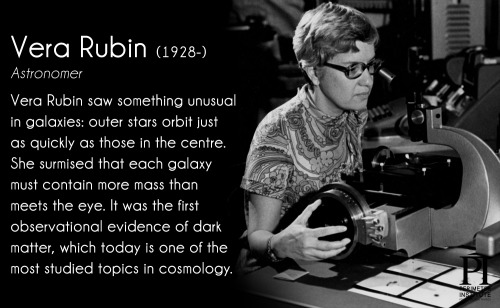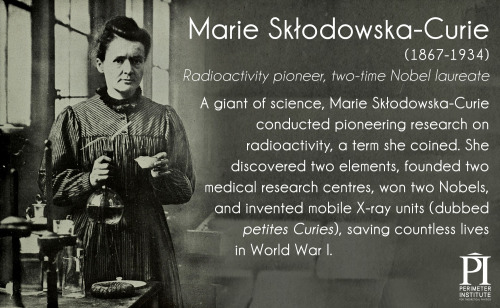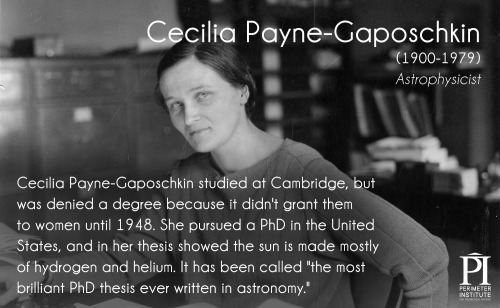Chances Of Hypersonic Travel Heat Up With New Materials Discovery

Chances of hypersonic travel heat up with new materials discovery
Researchers at The University of Manchester in collaboration with Central South University (CSU), China, have created a new kind of ceramic coating that could revolutionise hypersonic travel for air, space and defense purposes.
Hypersonic travel means moving at Mach five or above, which is at least five times faster than the speed of sound. When moving at such velocity the heat generated by air and gas in the atmosphere is extremely hot and can have a serious impact on an aircraft or projectile’s structural integrity. That is because he temperatures hitting the aircraft can reach anywhere from 2,000 to 3,000 °C.
The structural problems are primarily caused by processes called oxidation and ablation. This is the when extremely hot air and gas remove surface layers from the metallic materials of the aircraft or object travelling at such high speeds. To combat the problem materials called ultra-high temperature ceramics (UHTCs) are needed in aero-engines and hypersonic vehicles such as rockets, re-entry spacecraft and defence projectiles.
But, at present, even conventional UHTCs can’t currently satisfy the associated ablation requirements of travelling at such extreme speeds and temperatures. However, the researchers at The University of Manchester’s and the Royce Institute, in collaboration with the Central South University of China, have designed and fabricated a new carbide coating that is vastly superior in resisting temperatures up to 3,000 °C, when compared to existing UHTCs.
More Posts from T-sci-eng and Others

Does one of these LEGO men look bigger than the other? They’re actually the exact same size, but are in an Ames room - a false-perspective illusion room that tricks your brain into thinking things are smaller, or larger, than they really are.
You can make one of these models to try this for yourself. Download our free template from here. And it even works in full size, if you can make one large enough!










PERIODIC SPONGE SURFACES AND UNIFORM SPONGE POLYHEDRA IN NATURE AND IN THE REALM OF THE THEORETICALLY IMAGINABLE
By Michael Burt- Prof emeritus, Technion, I.I.T. Haifa Israel
The diversity of shapes and forms which meets the eye is overwhelming. They shape our environment: physical, mental, intellectual. Theirs is a dynamic milieu; time induced transformation, flowing with the change of light, with the relative movement to the eye, with physical and biological transformation and the evolutionary development of the perceiving mind. “Our study of natural form “the essence of morphology”, is part of that wider science of form which deals with the forms assumed by nature under all aspects and conditions, and in a still wider sense, with forms which are theoretically imaginable ..(On Growth and Form D'Arcy Thompson), “Theoretically” to imply that we are dealing with causal- rational forms. “It is the business of logic to invent purely artificial structures of elements and relations. Sometimes one of these structures is close enough to a real situation to be allowed to represent it. And then, because the logic is so tightly drawn, we gain insight into the reality which was previously withheld from us” (C. Alexander). A particular interest should be focused on those structures which are shaped like solids or containers, with continuous two-manifold enveloping surfaces, enclosing a volume of space and thus subdividing the entire space into two complementary sub-spaces, sometimes referred to as interior and exterior, although telling which is which, is a relativistic notion. On each of these envelopes, topologically speaking, an infinite number of different maps composed of polygonal regions (faces), which are bounded by sets of edge segments and vertices, could be drawn, to represent what we call polyhedra, or polyhedral envelopes. We come to know them by various names and notations, evolving through many historical cultures up to our present times; each representing an individual figure-polyhedron, or a family, a group, a class or a domain; convex-finite, Platonic and Archimedean polyhedra; pyramids, prisms; anti-prisms; star polyhedra; deltahedra; zonohedra; saddle polyhedra, dihedral, polydigonal, toroidal, sponge like, finite and infinite polyhedra; regular, uniform, quasi-regular, and so forth; all inscribable in our 3-dimensional space. It is these structures and their extended derivatives which shape our physical-natural or artificial man-conceived environment and provide for our mental pictures of its architecture. The number of forms which had acquired a name or a specific notation through the ages is amounting to infinity, although the number of those which comprise our day to day formal vocabulary and design imagery is extremely (and regretfully) limited by comparison, even amongst designers and architects, whose profession, by definition, compels them to manipulate and articulate forms and space. Here it is right to observe that name-giving is part of the creative and generative process. The number of polyhedral forms which did not receive, as yet a proper name or a notation is also infinite. Infinite is also the number of potentially existing and possible imaginary periodic forms, not envisaged yet. Conspicuous are those relating to sponge-like labyrinthian, polyhedral, space dividing surfaces, which until quite recently were not even considered as a research topic. The interest in these forms has been prompted by our growing awareness of their abundance in nature and their importance, not only in describing micro and macro-physical and biological phenomena, but also in coping with morphological complexity and nature of our built environment and its emerging new architecture and the order and formal character of our living spaces, on either the building or the urban scale. Nature is saturated with sponge structures on every possible scale of physical-biological reality. The term was first adopted in biology: “Sponge: any member of the phylum Porifera, sessile aquatic animals, with single cavity in the body, with numerous pores. The fibrous skeleton of such an animal, remarkable for its power of sucking up water”. (Wordsworth dictionary). the entire study here
© Michael Burt- Prof emeritus, Technion, I.I.T. Haifa Israel




Concrete vs. Cement
Concrete and cement are (mostly) two different materials. Why mostly? Because concrete is made using cement. Though cement can (technically) be used on its own, concrete cannot be made without first making cement.
Classified as a ceramic, cement starts as a powder, a mixture of limestone and other minerals, which is heated and mixed with gypsum to form what we know of as cement. Still a powder in this form, once water is added and mixed the cement then hardens.
Portland cement, probably the most well known and commonly used cement, is classified as a hydraulic cement. This essentially means that once water has been added the chemical reaction, called hydration, that hardens the cement is not dependent on how much water is added. Hydraulic cements can harden underwater and remain strong even in wet conditions. As a side note, Portland cement is not a brand name, but a particular type of cement.
On the other hand, concrete is composed of cement, aggregate, and water, and is thus classified as a composite. Composites are defined as consisting of a matrix or binder that has a reinforcement within it. In the case of concrete, the cement water mixture is the matrix in which the reinforcement, or aggregate exists.
The aggregate is typically comprised of stones, rocks, and sand and its addition increases the durability of the concrete. The amount of the aggregate or the size of the aggregate added can also effect the water-to-cement ratio required to harden the material, strengthening the final product. The hardening process continues for years, meaning that concrete only gets stronger with age.
Though most concretes are lime-based, asphalt concrete uses asphalt as the cement material and polymer concretes also exist. Another common type of concrete is reinforced concrete, in which rebar, or reinforcing bars, are embedded within to add to the strength of the concrete.
Sources: ( 1 ) ( 2 ) ( 3 ) ( 4 ) ( 5 )


Withstanding a blast of electricity from a huge Tesla coil using a Faraday cage
A Faraday cage shields the interior from external electromagnetic radiation and electrical fields by channelling electricity through the cage, providing constant voltage on all sides of the enclosure. Since the difference in voltage is the measure of electrical potential, no current flows through the interior space of the cage. In our daily lives we are surrounded by this invention. Faraday cages can be found in microwave ovens, elevators and around our computer cables (the shield around cables such as USB’s protects the internal conductor from external electrical noise). Even in your everyday car or plane journey you are surrounded by a Faraday cage protecting you from the adverse effects of electrical fields such as lightning.
Watch the full clip in the 2016 CHRISTMAS LECTURES, ‘Supercharged: Fuelling the future’.








Are Cloaking Devices Coming? Metalens-Shaped Light May Lead The Way
“The biggest challenge facing a real-life cloak has been the incorporation of a large variety of wavelengths, as the cloak’s material must vary from point-to-point to bend (and then unbend) the light by the proper amount. Based on the materials discovered so far, we haven’t yet managed to penetrate the visible light portion of the spectrum with a cloak. This new advance in metalenses, however, seems to indicate that if you can do it for a single, narrow wavelength, you can apply this nanofin technology to extend the wavelength covered tremendously. This first application to achromatic lenses covered nearly the full visible-light spectrum (from 470 to 670 nm), and fusing this with advances in metamaterials would make visible-light cloaking devices a reality.”
What would it take to have a true cloaking device? You’d need some way to bend the light coming from all across the electromagnetic spectrum around your cloaked object, and have it propagate off in the same direction once it moved past you. To an outside observer, it would simply seem like the cloaked object wasn’t there, and they’d only view the world in front of and behind them. Even with the recent advances that have been made in metamaterials, we have not yet been able to realize this dream in three dimensions, covering the entire electromagnetic spectrum, and from all directions. But a new advance in metalens technology might get you the full electromagnetic spectrum after all, as they appear to have solved the problem of chromatic aberration with a light, small, and inexpensive solution. If we can combine these two technologies, metalenses and metamaterials, we just might realize the dream of a true invisibility cloak.
Whether you’re a Star Trek or Harry Potter fan, the ability to turn yourself invisible would be Earth-shattering. Come see how transformation optics might transform the world!




The great esGape
Unlike most elemental metals, gallium will melt in the palm of your hand, or at temperatures above about 30 °C. And that’s not the only unusual thing about this element: It also expands when it freezes. In this video series, warm liquid gallium is poured into a glass vial (top), followed by a little clean-up. As the gallium cools back down to room temperature, it starts to bubble up as its volume expands (third video down). Overall, it expands 3%, shattering the vial (bottom). Water is a substance commonly used to demonstrate this sort of expansion, growing about 8% in volume when frozen, but other elements exhibit this behavior as well, including silicon and plutonium. The final two clips have been accelerated 200 times and 10 times, respectively.
Credit: Periodictable.ru (watch the whole video here; GIFs created by rudescience)
More ChemPics and C&EN stories:
Liquid metals take shape
A melting liquid
Rolling out liquid-metal motors

New superglue allows for bonding stretchable hydrogels
A team of researchers at Johannes Kepler University Linz has developed a new type of glue that can be used to bond hydrogels to other hard or soft objects. In their paper published on the open-access site Science Advances, the group explains their development process, the structure of the glue, how it works and in what ways.
Hydrogels, as the name suggests, are materials made mainly out of water. They are typically rubbery and are often elastic. Many of them have been developed to allow for the creation of materials that are more like those found in living creatures. Some examples include soft contact lenses, soft bone replacement in the vertebrae and even jelly-like robots. But one thing that has been holding back more advanced applications is the inability to glue or bond hydrogels with other objects in ways that allow for bending or stretching, or even for attaching well to hard objects. In this new effort, the researchers report they have developed a glue that solves this problem.
Read more.

Students fortify concrete by adding recycled plastic
Adding bits of irradiated plastic water bottles could cut cement industry’s carbon emissions
Discarded plastic bottles could one day be used to build stronger, more flexible concrete structures, from sidewalks and street barriers, to buildings and bridges, according to a new study.
MIT undergraduate students have found that, by exposing plastic flakes to small, harmless doses of gamma radiation, then pulverizing the flakes into a fine powder, they can mix the plastic with cement paste to produce concrete that is up to 20 percent stronger than conventional concrete.
Concrete is, after water, the second most widely used material on the planet. The manufacturing of concrete generates about 4.5 percent of the world’s human-induced carbon dioxide emissions. Replacing even a small portion of concrete with irradiated plastic could thus help reduce the cement industry’s global carbon footprint.
Reusing plastics as concrete additives could also redirect old water and soda bottles, the bulk of which would otherwise end up in a landfill.
Read more.
-
 angelic-girl liked this · 6 years ago
angelic-girl liked this · 6 years ago -
 wexhop liked this · 7 years ago
wexhop liked this · 7 years ago -
 syzara liked this · 7 years ago
syzara liked this · 7 years ago -
 all-truths-wait-in-all-things reblogged this · 7 years ago
all-truths-wait-in-all-things reblogged this · 7 years ago -
 all-truths-wait-in-all-things liked this · 7 years ago
all-truths-wait-in-all-things liked this · 7 years ago -
 faejilly reblogged this · 7 years ago
faejilly reblogged this · 7 years ago -
 leealankl-blog liked this · 7 years ago
leealankl-blog liked this · 7 years ago -
 gardenmeister72 liked this · 7 years ago
gardenmeister72 liked this · 7 years ago -
 faejilly liked this · 7 years ago
faejilly liked this · 7 years ago -
 thedivinemissema reblogged this · 7 years ago
thedivinemissema reblogged this · 7 years ago -
 jentheraven liked this · 7 years ago
jentheraven liked this · 7 years ago -
 brashka liked this · 7 years ago
brashka liked this · 7 years ago -
 thenomadiclioness reblogged this · 7 years ago
thenomadiclioness reblogged this · 7 years ago -
 thenomadiclioness liked this · 7 years ago
thenomadiclioness liked this · 7 years ago -
 risotech liked this · 7 years ago
risotech liked this · 7 years ago -
 iceman6565 liked this · 7 years ago
iceman6565 liked this · 7 years ago -
 cvgrape reblogged this · 7 years ago
cvgrape reblogged this · 7 years ago -
 eddieflat liked this · 7 years ago
eddieflat liked this · 7 years ago -
 generickid liked this · 7 years ago
generickid liked this · 7 years ago -
 hydroagronomist liked this · 7 years ago
hydroagronomist liked this · 7 years ago -
 m0nk3yb01 reblogged this · 7 years ago
m0nk3yb01 reblogged this · 7 years ago -
 gnosila liked this · 7 years ago
gnosila liked this · 7 years ago -
 jle321456 liked this · 7 years ago
jle321456 liked this · 7 years ago -
 redwoodhwy reblogged this · 7 years ago
redwoodhwy reblogged this · 7 years ago -
 chazzlemcfrazzlelove-blog reblogged this · 7 years ago
chazzlemcfrazzlelove-blog reblogged this · 7 years ago -
 chazzlemcfrazzlelove-blog liked this · 7 years ago
chazzlemcfrazzlelove-blog liked this · 7 years ago -
 sciencenerd4-blog liked this · 7 years ago
sciencenerd4-blog liked this · 7 years ago -
 kalifissure liked this · 7 years ago
kalifissure liked this · 7 years ago -
 tilthy liked this · 7 years ago
tilthy liked this · 7 years ago -
 panda-of-the-trashh reblogged this · 7 years ago
panda-of-the-trashh reblogged this · 7 years ago -
 panda-of-the-trashh liked this · 7 years ago
panda-of-the-trashh liked this · 7 years ago -
 t-sci-eng reblogged this · 7 years ago
t-sci-eng reblogged this · 7 years ago -
 knead-weed reblogged this · 7 years ago
knead-weed reblogged this · 7 years ago -
 oneapplepiefromscratchplease reblogged this · 7 years ago
oneapplepiefromscratchplease reblogged this · 7 years ago -
 oneapplepiefromscratchplease liked this · 7 years ago
oneapplepiefromscratchplease liked this · 7 years ago -
 ginseiryu reblogged this · 7 years ago
ginseiryu reblogged this · 7 years ago -
 rumo99 liked this · 7 years ago
rumo99 liked this · 7 years ago -
 how-do-i-type liked this · 7 years ago
how-do-i-type liked this · 7 years ago -
 aerogel-man reblogged this · 7 years ago
aerogel-man reblogged this · 7 years ago -
 zalenthor reblogged this · 7 years ago
zalenthor reblogged this · 7 years ago -
 zalenthor liked this · 7 years ago
zalenthor liked this · 7 years ago -
 realcleverscience liked this · 7 years ago
realcleverscience liked this · 7 years ago









